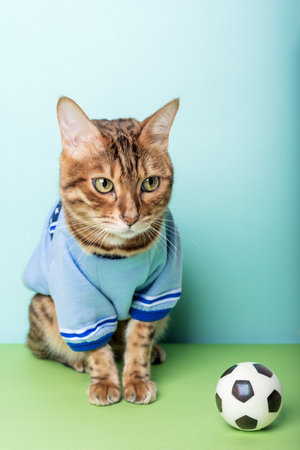Understanding the Needs of Long-Haired Cats
Long-haired cats, such as the British Longhair, Persian, and Maine Coon, have become beloved companions in many UK homes. Their luxurious coats add beauty and charm but also require a dedicated grooming routine to keep them comfortable and healthy. Unlike their short-haired counterparts, long-haired breeds are prone to matting, tangles, and excessive shedding, especially during seasonal changes in the British climate. Regular grooming is not just about appearance—it’s an essential aspect of their overall wellbeing.
Why Regular Grooming Matters
In the damp and often chilly weather of the UK, long-haired cats can easily develop knots and mats that may harbour dirt or even lead to skin infections if neglected. Routine brushing helps prevent these issues and reduces hairballs, which are particularly common in indoor cats. Moreover, it offers a valuable opportunity for owners to check for signs of parasites or skin problems early on.
Common Long-Haired Breeds in the UK
| Breed | Key Coat Features | Special Grooming Needs |
|---|---|---|
| British Longhair | Dense and plush double coat | Daily brushing to avoid mats |
| Maine Coon | Semi-long, water-repellent fur | Frequent combing, focus on belly/tail |
| Persian | Silky, thick undercoat | Professional grooming advised regularly |
Caring Beyond the Surface
Caring for a long-haired cat is an act of compassion—a commitment that goes beyond just keeping their fur looking tidy. Each grooming session is a chance to bond with your feline friend, show them love, and ensure they feel safe and cherished in your home. In the UK’s unique environment, understanding these specific needs empowers cat owners to provide the best possible care for their fluffy companions.
Essential Grooming Tools for British Homes
When it comes to grooming long-haired cats in the UK, having the right set of tools is crucial not only for your pet’s comfort but also for managing the unique demands of the British climate. Damp weather and central heating can influence your cat’s coat condition, making regular grooming an act of loving care. Below, we explore the best brushes, combs, and other essentials, along with practical advice on sourcing them locally—because every cat deserves a tangle-free, healthy coat.
The Must-Have Grooming Kit
Choosing suitable grooming tools means considering your cat’s fur type and sensitivity as well as the typical British indoor environment. Here’s a handy table outlining key items, their benefits, and where you can find them across the UK:
| Grooming Tool | Main Benefit | Recommended For | Where to Buy Locally |
|---|---|---|---|
| Slicker Brush | Removes loose hair & detangles knots | All long-haired breeds | Pets at Home, local independent pet shops |
| Wide-Toothed Comb | Gentle on sensitive skin; great for finishing touches | Cats prone to matting (e.g., Maine Coons) | Wilko, garden centres with pet sections |
| De-matting Tool | Tackles stubborn tangles without pulling too hard | Cats with dense undercoats (e.g., Persians) | Amazon UK, Just for Pets stores |
| Soft Bristle Brush | Adds shine & soothes anxious cats | Nervous or older cats needing gentle care | Morrisons, Sainsbury’s pet aisles |
| Paw & Eye Wipes (hypoallergenic) | Keeps paws clean after muddy garden adventures; reduces allergens indoors | Outdoor-access cats or allergy-sensitive homes | Boots, Waitrose, Holland & Barrett (eco-friendly options) |
Tips for Selecting Tools in a British Context
The UK’s ever-changing weather means fur can become damp or matted more quickly—particularly in autumn and winter months. Opt for rust-resistant metal combs and easy-to-clean brushes. Many high street retailers and community pet shops now offer a wide range of eco-conscious products too, perfect for those wishing to combine sustainability with animal welfare.
Support Local: Why It Matters
By purchasing from local businesses or charity-run pet shops, you’re not just getting expert advice tailored to your region—you’re also supporting community initiatives that help vulnerable pets across Britain. Many independent retailers will gladly demonstrate how to use a new tool or recommend brands best suited to your particular breed.
A Note on Accessibility and Inclusion
If mobility or dexterity is a challenge, look for ergonomic handles and lightweight designs. Some charities like Cats Protection run pop-up grooming clinics or offer loan kits to ensure every guardian can provide proper care at home.
Selecting grooming tools may seem simple, but thoughtful choices enrich both your cat’s wellbeing and your connection to the wider community—one gentle stroke at a time.

3. Step-by-Step Home Grooming Guide
Grooming your long-haired cat at home in the UK can be a rewarding bonding experience, as well as essential for their health and happiness. Here’s a practical guide that covers brushing, bathing, and general care—each step designed to help both you and your feline friend feel calm and comfortable throughout the process.
Brushing: Keeping Coats Tangle-Free
Regular brushing helps prevent mats and tangles, which are common among British long-haired breeds like Persians or Maine Coons. Aim to brush your cat at least once daily using the right tools. Here’s a quick comparison of popular brushes:
| Brush Type | Best For | UK Availability |
|---|---|---|
| Slicker Brush | Removing loose fur & detangling | Pet shops & online (Pets at Home, Amazon UK) |
| Wide-Tooth Comb | Tackling stubborn knots | Grooming specialists & vet clinics |
| De-matting Tool | Severe mats (use with care) | Specialist pet stores |
Brushing Tips:
- Always start gently, especially if your cat is nervous or new to grooming.
- Brush in the direction of hair growth, paying special attention to areas behind the ears and under the arms where mats form easily.
- Offer treats or soothing words—cats respond well to positive reinforcement in a calm British accent!
Bathing: When and How to Bathe Your Cat
Cats generally groom themselves, but sometimes a bath is necessary—especially if they get into something sticky or smelly. Use a mild, cat-safe shampoo available from reputable UK pet suppliers. Make sure the room is warm and draught-free. Here’s a basic step-by-step:
- Brush thoroughly before bathing to remove loose fur.
- Fill the sink or tub with a few inches of lukewarm water.
- Gently wet your cat’s coat using a jug or handheld shower head.
- Lather with shampoo, avoiding the face and ears.
- Rinse well—any residue can cause skin irritation.
- Towel dry and keep your cat indoors until fully dry to avoid chills.
Caring for Ears, Eyes, and Paws
Long-haired cats often have extra tufts around their ears and paws that need attention:
- Ears: Check weekly for wax build-up or signs of mites. Use cotton wool dampened with warm water—never insert anything into the ear canal.
- Eyes: Gently wipe away any discharge with a soft cloth. Tear staining is common in certain breeds; consult your local vet if persistent.
- Paws: Trim excess fur between paw pads to reduce tracking mud indoors during classic British rainy weather.
Create a Relaxing Environment
The key to successful grooming at home is creating an environment where both you and your cat feel safe. Choose a quiet space away from busy household activity. Playing gentle music or speaking softly in reassuring tones can help put your cat at ease—a cup of tea nearby for yourself doesn’t hurt either! Remember, patience is vital; take breaks if needed so grooming remains a positive experience for you both.
4. Common Challenges and How to Overcome Them
Grooming long-haired cats in the UK comes with its unique set of challenges, from matting and excessive shedding to coping with the unpredictable British weather. Recognising these common hurdles and addressing them with empathy ensures your feline friend remains comfortable, healthy, and happy.
Matting: A Persistent Foe
Mats can form quickly in a long-haired cat’s coat, particularly if grooming is neglected even for a short while. In the damp UK climate, fur can become tangled more easily, especially after outdoor adventures or during rainy spells. Mats are not only unsightly but can cause discomfort and skin irritation.
Solutions for Matting
| Challenge | Solution |
|---|---|
| Mild tangles | Use a wide-toothed comb gently, working from the tips of the fur inward. Offer treats as positive reinforcement. |
| Severe mats | If mats are tight against the skin, avoid cutting them yourself to prevent injury. Seek help from a professional groomer experienced with cats. |
| Prevention | Brush your cat daily using appropriate tools such as slicker brushes or detangling sprays designed for felines. |
Shedding: Managing Fur All Year Round
The UKs seasonal changes—especially spring and autumn—often trigger increased shedding in long-haired breeds. While it’s natural for cats to lose some hair, excessive shedding can lead to hairballs and more frequent cleaning around the home.
Caring Approaches to Shedding
- Regular Brushing: Brushing at least three times a week removes loose hairs before they spread around the house or are ingested by your cat.
- Nutritional Support: Feed a balanced diet rich in Omega-3 and Omega-6 fatty acids; this supports skin health and reduces unnecessary shedding.
- Tidy Living Space: Use lint rollers or pet-specific hoovers on furniture and clothing to keep your home comfortable for both you and your cat.
The British Weather: Dampness and Draughts
The famously unpredictable British weather presents unique grooming complications. Damp air can make coats frizzier or heavier, leading to increased matting, while draughty homes may exacerbate shedding as cats adapt their coats to temperature fluctuations.
Practical Solutions for Weather-Related Issues
- Drying Off: After wet walks or garden time, towel dry your cat gently and brush through their coat once dry to prevent tangles forming.
- Indoor Comfort: Ensure your home has warm, cosy spaces away from draughts where your cat can groom itself in peace.
- Humidity Control: Consider using a dehumidifier during particularly damp periods to help maintain manageable fur texture.
A Final Word on Compassionate Grooming
No matter which challenge you face, remember that patience and gentle handling are key. Turn grooming into an opportunity for bonding, always responding to your cat’s cues with kindness. If at any point you feel overwhelmed, reach out to local UK professionals who understand both the needs of long-haired breeds and the nuances of British living conditions. Together, you’ll ensure your feline companion looks—and feels—their very best all year round.
5. When to Seek Professional Help
Even the most diligent cat owners in the UK may encounter moments when home grooming just isn’t enough. According to insights from experienced British groomers, recognising when your long-haired cat needs expert intervention can make a world of difference to their comfort and health. Here’s how you can spot the signs, and what steps to take next.
Recognising the Signs: When Home Grooming Isn’t Enough
Grooming Issue |
Indicators |
Recommended Action |
|---|---|---|
| Severe Matting | Large, tight clumps of fur that cannot be brushed out gently at home | Seek professional help to avoid skin injury or distress |
| Skin Conditions | Redness, sores, scabs, or persistent scratching after grooming attempts | Consult a vet or qualified groomer for assessment and treatment |
| Uncooperative Behaviour | Persistent aggression, anxiety, or distress during grooming sessions | A professional groomer with experience in feline behaviour can help ease the process safely |
| Health-Related Grooming Needs | Cats with mobility issues, obesity, or age-related challenges making self-grooming difficult | Schedule regular appointments with a cat-specialist groomer |
| Pest Infestation | Visible fleas, ticks, or other parasites despite home treatments | A combination of veterinary advice and professional grooming may be required |
Finding a Trustworthy Cat Groomer in the UK
The UK is home to many pet professionals, but not all have the expertise needed for long-haired cats. Start by seeking recommendations from your local vet or animal charity—organisations such as Cats Protection often keep a list of reputable groomers. You can also look for members of recognised bodies like The Pet Industry Federation (PIF) or the British Dog Groomers Association (many members are trained in feline care too). Always check for:
- Qualifications: Ask about formal training in cat grooming and handling.
- Experience: Look for professionals who specialise in long-haired breeds.
- Caring Approach: Choose someone who prioritises gentle handling and stress-free techniques.
- Local Reviews: Read feedback from other UK cat owners on platforms like Trustpilot or local Facebook groups.
- Sterile Environment: Ensure the salon is clean and follows best-practice hygiene protocols.
If your cat has additional health needs or severe matting, it’s wise to select a groomer who works closely with a veterinary practice. Remember: seeking help isn’t a failure—it’s an act of love and responsibility. By turning to trusted professionals, you’re giving your beloved companion the very best care our British communities have to offer.
Maintaining Welfare and Building a Bond
Regular grooming isn’t just about keeping your long-haired cat looking lovely; it’s a cornerstone of feline welfare, ensuring both physical health and emotional wellbeing. For many British cat owners, grooming sessions become cherished routines—moments of quiet connection that go far beyond detangling fur.
The Welfare Benefits of Regular Grooming
| Benefit | Description |
|---|---|
| Prevents Matting | Reduces discomfort and skin irritation caused by tangled fur. |
| Early Health Detection | Allows owners to spot lumps, wounds, or parasites early on. |
| Reduces Shedding | Keeps the home cleaner and helps manage hairballs in cats. |
| Strengthens Trust | Cats learn to associate touch with comfort and safety. |
Heartwarming Stories from Across the UK
Cat lovers across Britain often share how grooming has changed their relationship with their pets. Mrs. Hughes from Yorkshire recalls how her rescue Persian, Maisie, was initially wary of human contact: “At first, Maisie would shy away from the brush. But after weeks of gentle persistence, she started purring as soon as I picked it up. Now, our evening grooming is her favourite time—we’ve built such trust.”
In Cornwall, young Tom and his elderly Maine Coon, Jasper, have turned their Sunday afternoons into a special ritual. As Tom puts it: “Jasper knows when it’s ‘spa day’. He sprawls out on the rug and lets me get every knot out while we listen to Radio 4. It’s our bonding time—and I think he looks forward to it as much as I do.”
The Emotional Rewards of Grooming Together
- Grooming offers moments of calm for both cat and owner—a break from daily stresses.
- Cats develop greater confidence around humans when touched regularly in a gentle way.
- Owners often feel a deep sense of purpose in caring for their companions’ needs.
Nurturing Trust—One Brush at a Time
No matter where you are in the UK—from bustling cities to tranquil countryside—making grooming a regular part of your routine will not only ensure your cat’s coat stays healthy but also foster an unbreakable bond. In these small acts of care, British cat owners find joy, comfort, and lasting companionship with their beloved pets.

